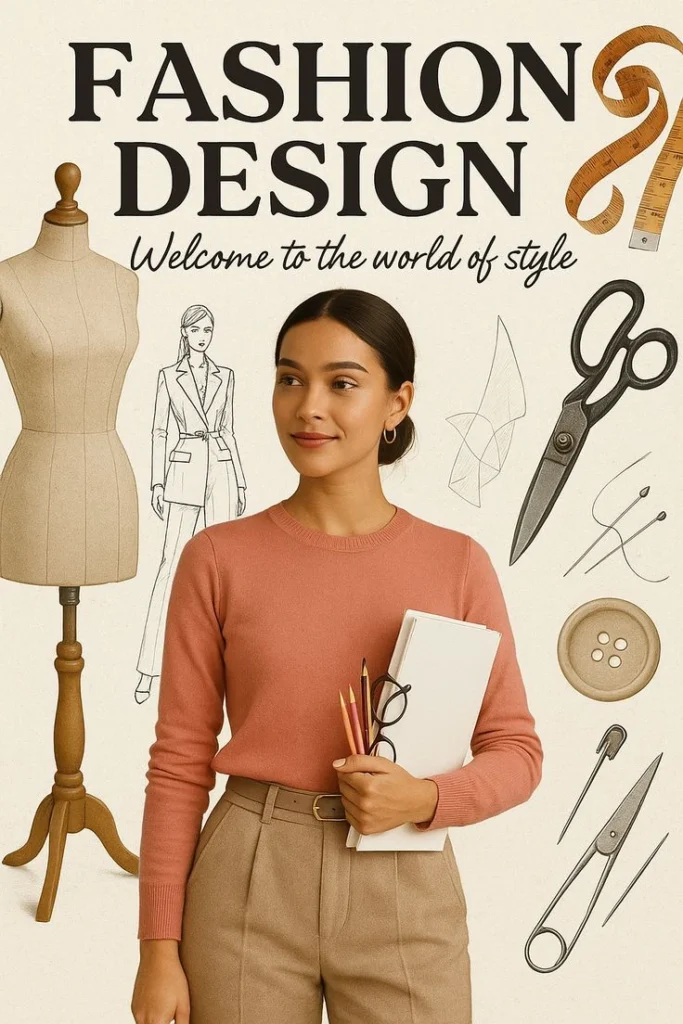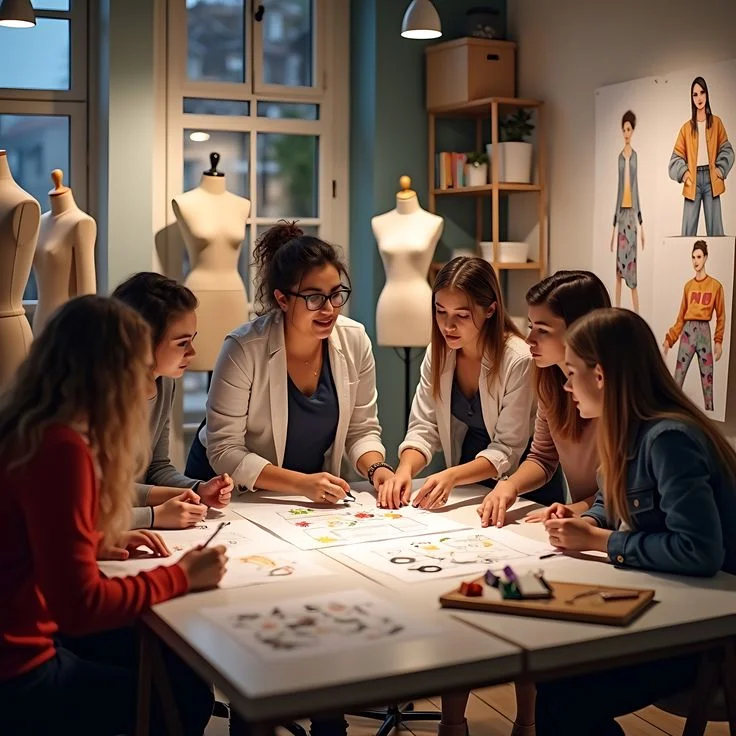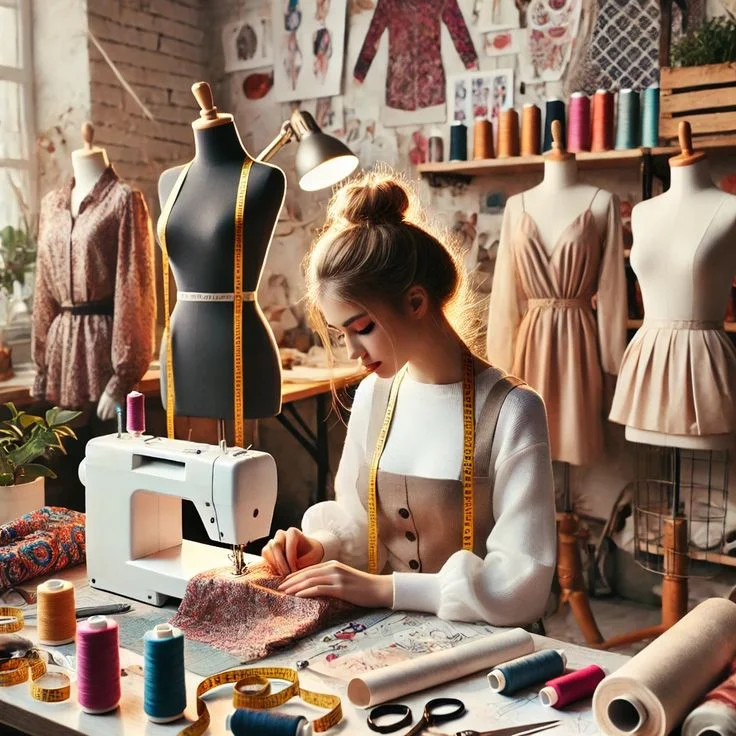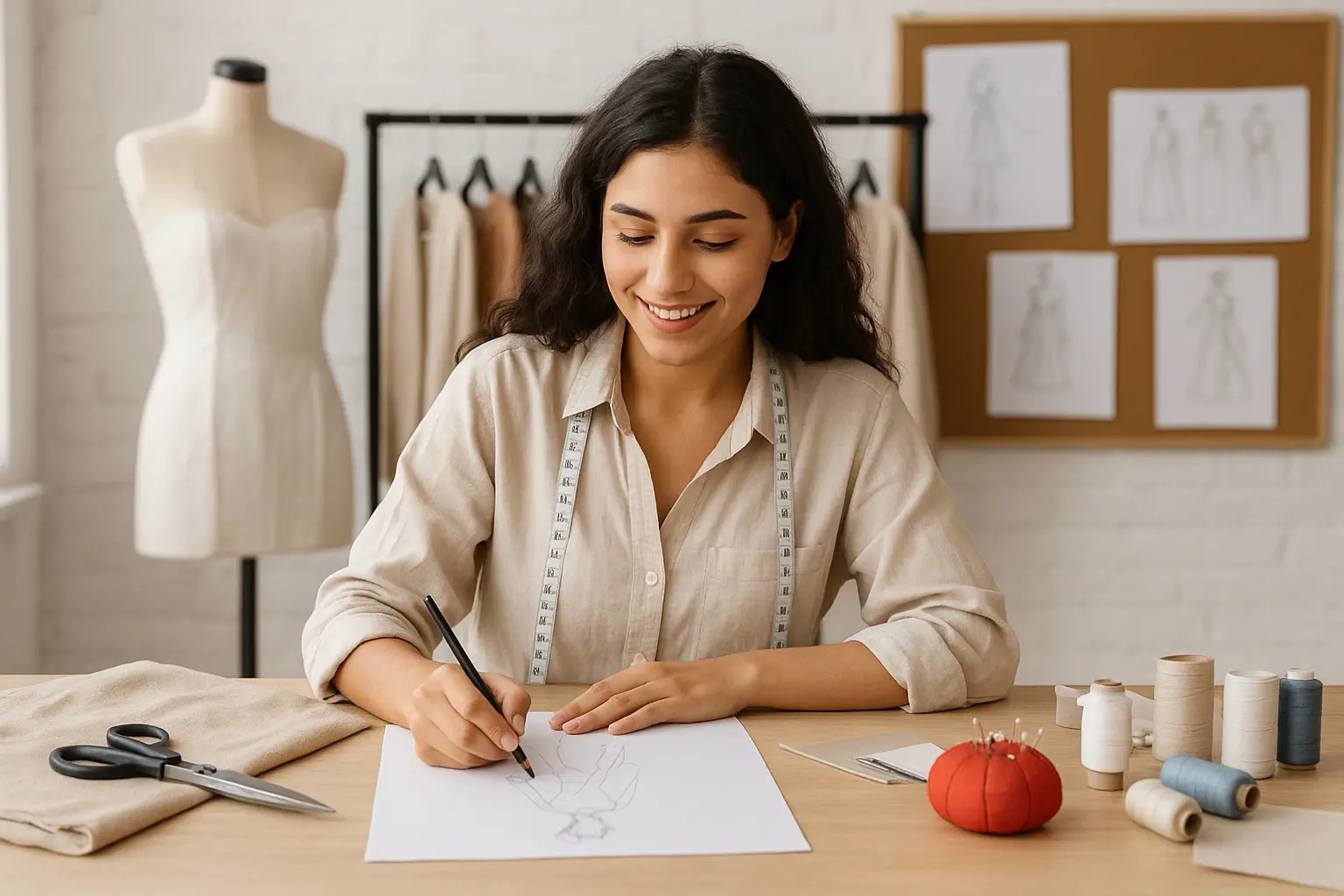When I first stepped into the world of fashion, I didn’t just want to wear stylish clothes I wanted to understand the story behind them. A fashion designer is not just someone who sketches garments; they are storytellers, innovators, and problem-solvers who shape the way we express ourselves. In this article, I’ll share my personal experience of learning about fashion design, the skills that make a designer successful, and why this career is more than just fabrics and needles.
The Role of a Fashion Designer in Today’s World

From my perspective, a fashion designer bridges the gap between creativity and practicality. Fashion is not limited to runways; it influences everyday clothing, work attire, cultural wear, and even sustainable fashion. A designer must balance trends with timelessness, while also keeping in mind comfort and cultural values.
I remember attending my first fashion exhibition where I realized that each garment carried a designer’s identity their thoughts, emotions, and vision stitched into every detail. That’s when I truly understood the responsibility that comes with being a designer.
Skills Every Aspiring Fashion Designer Needs

Over time, I discovered that being a fashion designer requires more than sketching abilities. These are the skills that stood out to me:
- Creativity and Innovation – The ability to turn ideas into unique designs.
- Technical Knowledge – Understanding fabrics, textures, sewing, and garment construction.
- Market Awareness – Knowing what consumers actually want, not just what looks good.
- Adaptability – Trends change quickly; a designer must adjust without losing their originality.
- Storytelling – Every collection should narrate something meaningful.
I once worked on a small project where I designed casual wear for college students. The biggest lesson I learned was that while creativity is vital, practicality is equally important.
Education and Training for Fashion Designers
Although some fashion designers are self-taught, formal education can sharpen skills and open doors. I studied short courses in fashion sketching and garment construction, and they gave me a solid foundation. Fashion institutes teach:
- Fashion history and culture
- Textile science
- Pattern making
- Computer-aided design (CAD)
- Business and marketing in fashion
What impressed me most was how technology is shaping fashion design. Tools like 3D modeling and AI-driven fashion forecasting are becoming essential in the industry.
The Fashion Designer’s Creative Process

One of the most fascinating experiences I had was observing how designers bring a concept to life. Here’s the process I’ve seen firsthand:
- Research & Inspiration – Collecting references from culture, history, or nature.
- Sketching & Mood Boards – Visualizing the idea on paper or digitally.
- Material Selection – Choosing fabrics that align with comfort, style, and budget.
- Pattern & Sample Making – Developing prototypes before final production.
- Final Production – Turning sketches into wearable art.
I once assisted in creating a mood board, and it amazed me how small inspirations like a piece of architecture or a flower could shape an entire collection.
Challenges in the Life of a Fashion Designer
Behind the glamour, the life of a fashion designer is full of challenges. From my experience observing designers, these are the toughest parts:
- Competition – The industry is saturated with talent.
- Deadlines – Creativity under pressure is never easy.
- Balancing Art and Business – Designs must sell, not just impress.
- Sustainability Concerns – Eco-friendly fashion is no longer optional.
I’ve seen talented designers struggle to balance their passion with the demands of the business world. It’s a reminder that fashion is not just art, it’s also commerce.
Fashion Designers and Sustainability

One thing I strongly believe is that fashion designers have a responsibility toward the planet. Sustainable fabrics, recycling, and ethical labor practices are shaping the future of fashion. I remember wearing a jacket made from recycled denim at a local event, and people were amazed that sustainability could also look stylish.
This experience taught me that being a designer isn’t only about making beautiful clothes, but also about making responsible choices.
The Future of Fashion Designers
The future of fashion is exciting. With AI, virtual fashion shows, and digital clothing for avatars, the role of a fashion designer is expanding. I once tried a digital fashion app, and it showed me how garments could be tested virtually before production.
It made me realize that adaptability is the key to staying relevant. The designers who combine creativity with technology will lead the future.
Conclusion
Becoming a fashion designer is not just a career; it’s a lifelong journey of learning, adapting, and innovating. From my personal experiences, I’ve seen how designers influence society, culture, and even sustainability. If you’re aspiring to enter this field, remember: it’s not only about creating clothes, it’s about creating impact.
Fashion design is where art meets life and that’s what makes it endlessly inspiring.
FAQs About Fashion Designers
1. What does a fashion designer actually do?
A fashion designer creates concepts, sketches, and brings clothing and accessories to life while balancing creativity with practicality.
2. Do I need a degree to become a fashion designer?
Not always. While a degree helps, many successful designers are self-taught but continuously practice and learn.
3. How long does it take to become a fashion designer?
It depends — formal education may take 3–4 years, while self-taught designers grow at their own pace.
4. What software do fashion designers use?
Popular tools include Adobe Illustrator, CLO 3D, and CAD software for sketching and pattern making.
5. Is fashion designing a good career?
Yes, if you’re passionate and persistent. It offers creativity, recognition, and global opportunities.
6. What is the average salary of a fashion designer?
It varies widely depending on location, expertise, and brand. Some freelance designers earn project-based income.
7. Can fashion designers work from home?
Yes. With digital tools and e-commerce, many designers create and sell from their own studios.
8. How important is sustainability in fashion design?
Very important. Consumers now prefer eco-friendly fashion, and sustainability is the future of design.
9. What challenges do beginner fashion designers face?
Beginners often struggle with competition, financial limitations, and building a unique identity.
10. How can I start my journey as a fashion designer?
Begin with sketching ideas, learning basic sewing, studying trends, and creating small collections to showcase your work.
